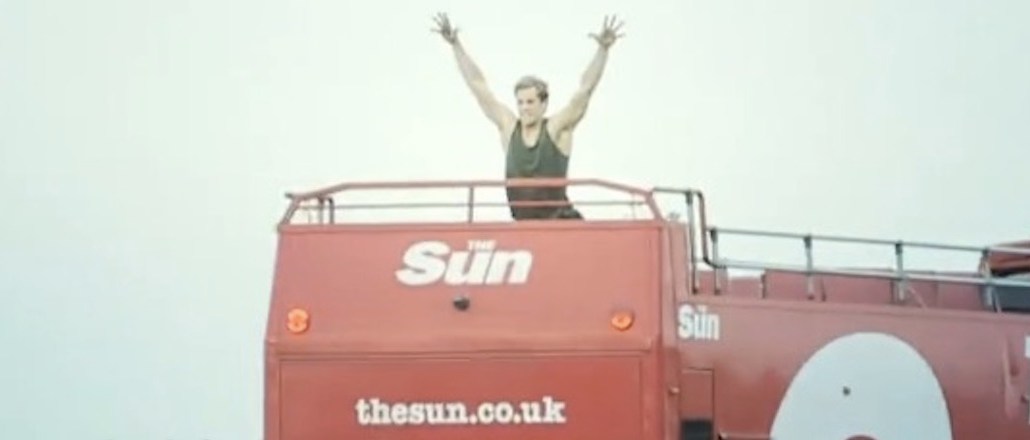Save 50% on a 3-month Digiday+ membership. Ends Dec 5.

National tabloid The Sun has learned a lot since dropping its paywall last November. For starters, the News UK-owned title has had to lean hard on Facebook to help drive up its audience. And not for the same reasons that most publishers would typically cite. Coming out from behind the paywall a year ago, it found itself with zero search equity.
That’s a daunting place for a publisher to be. And no matter how important Facebook is for publishers prioritizing reach, search remains a critical part of the mix. The Sun is working hard at getting its organic search back to its pre-paywall levels, but it’s been Facebook which has helped the publisher get its traffic back on track so fast.
News UK chief customer officer Chris Duncan likened the feeling of The Sun shedding its paywall, to “coming blinking back into the light.” But The Sun has been busy and, with the help of Facebook, has soared in traffic. “Having been absent for a few years, we’re now right back up,” he said. The traffic speaks for itself: Today, The Sun has 20 million monthly visitors (compared to a couple million last December) — just 7 million shy of Mail Online in the U.K., according to comScore.
Those numbers are reflective of a busy year for The Sun: After relaunching its site, it began publishing to Facebook Instant Articles, coded its pages for Google AMP, released Messenger bots, and became one of the first publishers to create a large, dedicated Snapchat team. Instagram — being natural extensions of the Facebook “engine” — is also a priority.
Now The Sun is at that next stage of figuring out how to make the most of Facebook as a marketing distribution channel to identify new audiences, and then convert flyby visitors into habitual readers and, ultimately, even customers of some of its paid products. As all publishers are only too aware, relying too heavily on Facebook’s algorithm for traffic carries major risks. “Facebook will optimize Facebook to keep people within Facebook. And that means publisher content can be ranked high or low depending on what Facebook thinks will keep people in the app,” said Duncan.
Then there’s also the fact publishers don’t have the same control of audience data and insights as they do within their own properties. “As a publisher, you need think about what you’re building and how you’re going to have the kind of protection in future. That comes with managing your own assets,” he added.
When it comes to standing out on Facebook, publishers need to think long and hard about brand so that people who read or watch content there know who is bringing it to them. “Branding will be more important that distribution next year for publishers,” said Duncan. When prioritizing what content to run on Facebook, The Sun opts for one of three approaches: make people laugh, get them angry or make them sad. “All the extremes,” said Duncan. Short videos that do well on Facebook tick both the branding and attention-grabbing boxes, like a video in which The Sun gets a pole vaulter to jump into a moving Sun-branded bus. It got more than 900,000 views on Facebook. Typically, its videos on Facebook range between 200,000 and 1 million views.
Ad position: web_incontent_pos1
The Sun does its fair share of Facebook Live videos — the latest being an interview with pop-rock band The Vamps by the publisher’s associate editor Danny Wootton — which are consumed within Facebook. But the goal is always to drive people from Facebook to its own properties where they can read another article, watch a video or read the sidebars.
The Sun uses paid social and search budgets very differently compared to when it was behind a paywall — when 100 percent of its traffic was driven by paid activity. Those budgets are radically down today, because it can do so much more organically on Facebook, and the rest of the platform’s channels which The Sun is pushing hard: Instagram, and Messenger. “The aim is to, over time, build brand recognition and habit of people coming back to us on Facebook and then our own sites. Then we can spend our paid social budget on totally new audiences that haven’t come to us before.”
More in Media

Digiday+ Research Subscription Index 2025: Subscription strategies from Bloomberg, The New York Times, Vox and others
Digiday’s third annual Subscription Index examines and measures publishers’ subscription strategies to identify common approaches and key tactics among Bloomberg, The New York Times, Vox and others.

From lawsuits to lobbying: How publishers are fighting AI
We may be closing out 2025, but publishers aren’t retreating from the battle of AI search — some are escalating it, and they expect the fight to stretch deep into 2026.

Media Briefing: Publishers turn to vertical video to compete with creators and grow ad revenue in 2026
Publishers add vertical video feeds to their sites to boost engagement, attract video ad spend and compete with news creators.
Ad position: web_bfu


